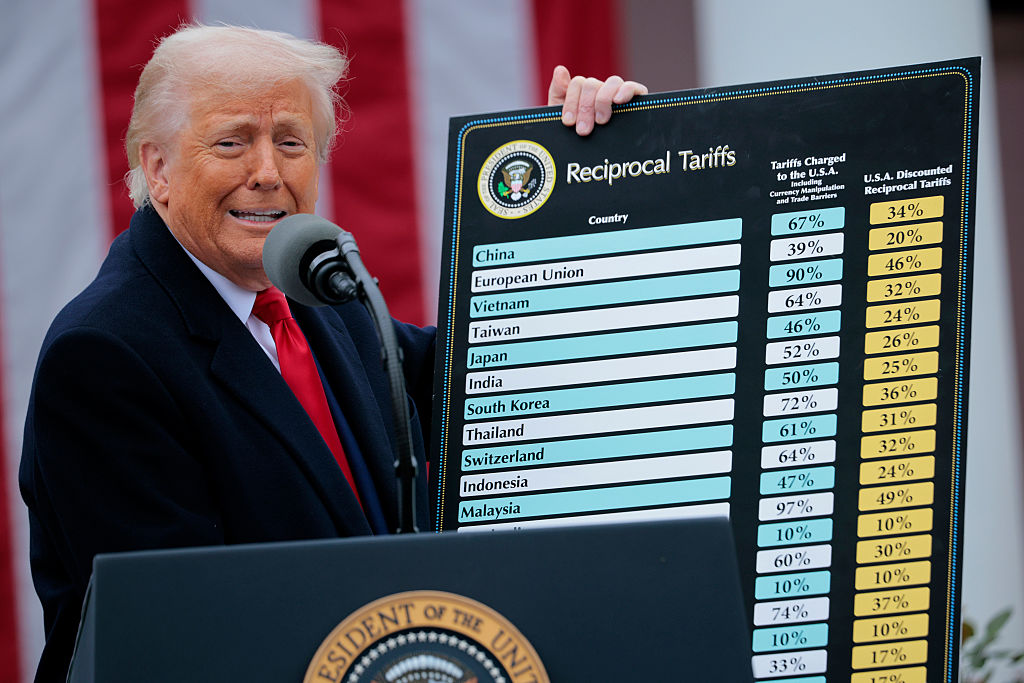A court has ruled some Trump tariffs illegal. Another court says tariffs are still on. Are US photographers in for more wild camera price swings?
The Trump administration has already appealed a court ruling that says the steepest reciprocal tariffs were illegal

US President Donald Trump’s sweeping reciprocal tariffs exceeded presidential authority, a US Court of International Trade has ruled. On Wednesday, May 28, the court blocked some of the steepest Trump tariffs – but not all newly imposed import taxes – giving the presidential administration up to 10 days to end the tariffs.
Less than 24 hours after the ruling, an appeals court paused that 10-day deadline, effectively leaving tariffs in place while the administration prepares for a legal battle. The Trump administration's appeal takes the case to the US Court of Appeals and could potentially head all the way to the Supreme Court.
While the initial ruling has likely sparked hope among price-weary Americans, the May 28 ruling and then May 29 pause have added more confusion to the on-again, off-again tariffs. Along with a potentially long legal battle, analysts from Goldman Sachs Group Inc note that the president could find other ways to impose similar import taxes, including a law that would allow for tariffs of up to 15% for 150 days.
Peter Navarro, Trump's senior counsel on trade and manufacturing, has said that the administration could invoke tariffs under other laws. "So you can assume that even if we lose, we will do it another way," Navarro said.

The panel of three judges ruled that Trump exceeded the presidential powers outlined in the International Emergency Economic Powers Act, a law that the New York Times says outlines trade embargoes and sanctions but doesn’t even mention tariffs. The ruling applies to the so-called reciprocal tariff against China and other nations.
The ruling does not, however, affect the tariffs imposed outside the International Emergency Economic Powers Act, which includes the tariffs on steel and cars, and also would not affect the threatened tariffs on semiconductors if enacted.
The Trump administration’s quick appeal of the ruling leaves much uncertainty over the future of tariffs in the US. For photographers, the initial ruling could signal a potential resolution to camera prices that have increased as a result of the tariffs, but a number of factors are still at play, including the appeals case.
The best camera deals, reviews, product advice, and unmissable photography news, direct to your inbox!
The court ruling doesn’t include the semiconductor tariff that the Trump administration began looking into last month. In April, the administration initiated investigations into possible tariffs on semiconductors and pharmaceuticals under the Trade Expansion Act, which gives the President the authority to impose tariffs for national security.
While the semiconductor tariffs have not been implemented, if such a tax were created, electronics – including cameras – would be affected. Semiconductors are integral to electronics manufacturing.
Digital cameras have multiple semiconductor components, including the sensor and processor. As a tariff initiated under another law, Wednesday’s ruling and the pending legal battle would not affect a potential semiconductor tariff.
The appeal – and analysts' predictions of finding other methods of imposing import taxes – add more uncertainty to the tariffs already fraught with confusion. That makes it unclear exactly how the ruling may affect camera prices.
Looking at how major brands have responded to the tariffs could offer hints at how prices may play out with the latest ruling. While some brands announced price changes quickly after the tariffs began, others followed a wait-and-see strategy.
Nikon, for example, waited until last week to announce price changes, with a June 23 date for adjusted prices that is more than two months after the tariffs went into effect. Other brands like Fujifilm paused some pre-orders.
The increasing number of out-of-stock products hints that companies like DJI may have paused some shipments, although the company hasn’t explicitly released a statement to that effect.
Other brands have added, then reduced the US list prices on some gear. Leica, for example, increased the price of the D-LUX 8 from $1,595 to $2,790 under the 145% reciprocal tariff on China. However, when China’s tariff rate dropped to 30 percent as part of a 90-day pause, Leica also reduced the cost of the camera to $1,915.
While it’s not yet clear how camera bands will react to the ruling cutting many of the steepest tariffs, based on the industry’s movements over the last few months, I wouldn’t be surprised if anticipated price increases were placed on hold or if photographers continue to see more "out of stock" labels. The initially announced tariffs, then the 90-day pause reducing those tariffs, left many businesses taking a wait-and-see approach. The court ruling, then the appeals court decision less than a day later, only adds more fuel to the uncertainty.
What worries me is analysts’ predictions that the administration will find other ways to charge similar taxes – at a time when the government is already looking into placing tariffs on semiconductors. A semiconductor tariff could significantly impact camera prices as well as other electronics in the US.
You may also like
US tariffs seem to be changing regularly. Follow our live blog for the latest on the US tariffs' impact on camera prices.

With more than a decade of experience writing about cameras and technology, Hillary K. Grigonis leads the US coverage for Digital Camera World. Her work has appeared in Business Insider, Digital Trends, Pocket-lint, Rangefinder, The Phoblographer, and more. Her wedding and portrait photography favors a journalistic style. She’s a former Nikon shooter and a current Fujifilm user, but has tested a wide range of cameras and lenses across multiple brands. Hillary is also a licensed drone pilot.
You must confirm your public display name before commenting
Please logout and then login again, you will then be prompted to enter your display name.
